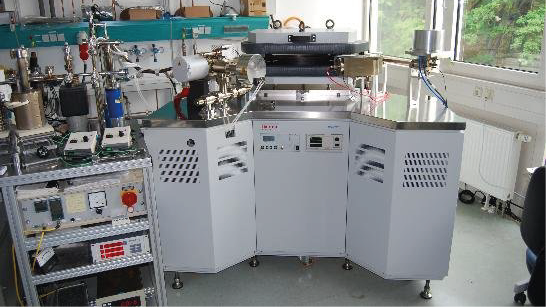Noble Gas Lab
Contact:
Web:
Infrastructure belongs to:
The noble gases (or "rare gases") helium, neon, argon, krypton, and xenon are chemically inert. Due to their volatile nature they have a strong tendency to partition into gas or fluid phases and can be used as tracers for the origin and the transport of fluids. In rocks they are typically present in very low concentrations of ~10⁻⁹ to 10⁻⁶ cm³ STP/g (He, Ar; 1 cm³ STP is equivalent to 2.7 x 10¹⁹ atoms) and ~10⁻¹³ to 10⁻¹⁰ cm³ STP/g (Ne, Kr, Xe). Therefore their concentrations and isotopic compositions may be modified to a measurable extent by nuclear processes such as radioactive decay or natural nuclear reactions. They can thus be used as dating tools (e.g. U/Th-⁴He, ⁴⁰K-⁴⁰Ar, surface exposure dating). Over the history of the Earth, such processes have modified the noble gas isotopic compositions in distinct terrestrial reservoirs (mantle, crust, atmosphere). The isotopic signature of noble gases yields therefore important information about the origin and history of a rock or fluid sample.
The Noble Gas Laboratory includes the following facilities:
- Two noble gas mass spectrometers (MM 5400 and Helix SFT), both fitted with:
- an ultrahigh vacuum furnace for heating and melting of rock samples
- a gas preparation line for removal of active gases
- a cryogenic adsorber for the separation of noble gases from each other
- pipette systems for calibration using noble gas standards
- and in addition:
- a water degassing line including an attachment connection for gas samples and
- an ultrahigh vacuum crushing device for the mechanical extraction of gases from rocks and minerals.
Both, the MM5400 and the Helix SFT are sector field mass spectrometer, which reach a mass resolution m/delta-m > 600 in the electron multipliers, which is essential for the separation of ³He⁺ (3.016 amu) from HD⁺ (3.022 amu) and thus for a precise determination of the ³He/⁴He ratio. In addition, owing to its "Split Flight Tube" the Helix SFT allows for the simultaneous detection of ³He und ⁴He. An additional electrostatic filter suppresses scattered ⁴He ions in the ³He beam, enabling the precise measurement of very small ³He/⁴He ratios. The heavier noble gases Ne, Ar, Kr and Xe are analyzed in "peak jump" mode in both mass spectrometers, i.e., the isotopes are detected one after another by setting the magnetic field accordingly.
Categories
Disciplinary Keywords
Instrumentation
Laboratory instrumentation
Instrument
-
Mass Spectrometer
Mass spectrometers are spectrometers that deal mainly with mass or quantitative amount such as weight in a gravitational field. (Source: Global Change Master Directory (GCMD). 2023. GCMD Keywords, Version 16.3. Greenbelt, MD: Earth Science Data and Information System, Earth Science Projects pision, Goddard Space Flight Center (GSFC) National Aeronautics and Space Administration (NASA). URL (GCMD Keyword Forum Page): https://forum.earthdata.nasa.gov/app.php/tag/GCMD+Keywords)
Links
Data Publication
Key Publication
Relationships
- is part of
